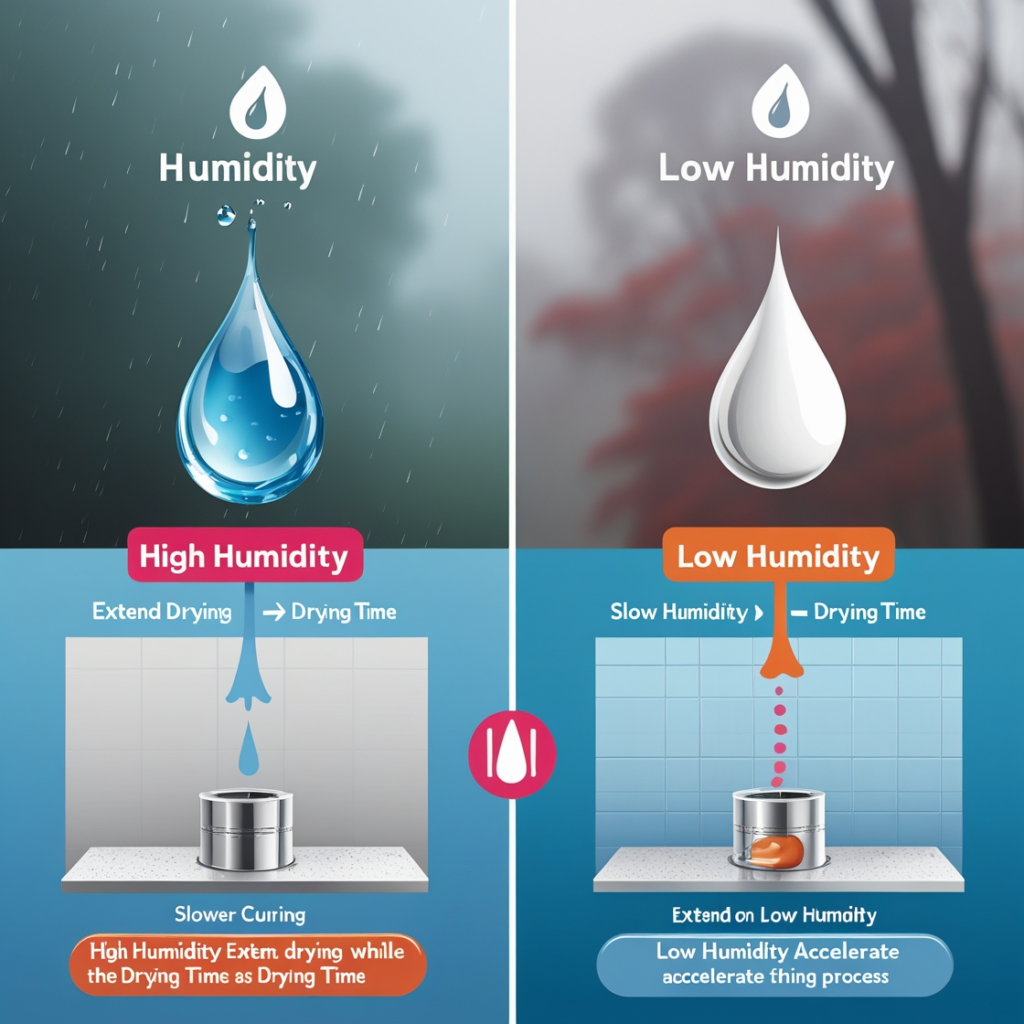everything you need for nail care and beauty

How Long Does Liquid Nails Take to Dry in 2025?
How Long Does Liquid Nails Take to Dry
If you’ve ever used Liquid Nails for a DIY project, you’re probably familiar with the anticipation and sometimes frustration that comes with waiting for it to dry. Whether you’re bonding wood, metal, or other materials, the drying time can seem like an eternity—especially when you’re eager to move on to the next step. But how long does Liquid Nails actually take to dry? And how can you speed up the process to avoid delays in your project? Let’s break it all down so you can complete your task with confidence and get the best results.
In this comprehensive guide, we’ll answer all your questions about how long Liquid Nails takes to dry, explain the different factors that impact drying times, and provide practical tips to speed up the drying process. Let’s dive in!
Table of Contents
What is Liquid Nails and Why Does Drying Time Matter?
Before we tackle the drying times, it’s important to understand what Liquid Nails is and why drying time plays such a significant role in the success of your project.
What is Liquid Nails?
Liquid Nails is a brand of construction adhesives used for bonding a variety of materials, including wood, ceramics, metal, drywall, and more. It’s designed to create a strong, durable bond that holds under pressure, making it a favorite for DIYers, professionals, and home improvement enthusiasts alike.
While Liquid Nails is a reliable adhesive, its effectiveness heavily depends on allowing enough time for it to dry and cure properly. Cutting corners in this process can lead to weak bonds and even project failure.
Why Drying Time Matters
So, why does drying time matter? Well, when you apply Liquid Nails, you’re depending on its adhesive properties to hold materials together under pressure. If you don’t allow sufficient time for it to dry and cure, the bond may not be as strong as it should be. A rushed project could lead to warping, shifting, or even failure of the adhesive, ruining all your hard work.
Understanding how long Liquid Nails takes to dry and giving it ample time to set ensures your project will withstand stress and last for years to come.
Factors Affecting How Long Liquid Nails Takes to Dry
The drying time of Liquid Nails is influenced by a variety of factors, some of which you can control and others you cannot. Let’s look at the most significant elements that determine how long you need to wait for your Liquid Nails to dry fully.
1. Temperature

Temperature is one of the most important factors when it comes to drying time. If the environment is too cold, the adhesive may take longer to dry. Ideally, Liquid Nails should be applied in temperatures ranging between 50°F (10°C) and 90°F (32°C). Anything outside this range could significantly delay the drying process.
What to Do:
- Work in a temperature-controlled room or wait for the right weather conditions to tackle your project.
- If you’re working in a colder environment, you can try using a space heater to raise the temperature in the area you’re working in.
2. Humidity

Humidity can also have a big impact on how quickly Liquid Nails dries. High moisture in the air can extend drying times and sometimes even cause the adhesive to take longer to set. Dry, low-humidity conditions are ideal for faster curing.
What to Do:
- If you’re working in a humid environment, consider using a dehumidifier to reduce moisture in the air, or wait for a more favorable weather day.
3. Thickness of the Adhesive Layer
Another key factor is how thickly you apply the Liquid Nails. The thicker the layer, the longer it will take for the adhesive to dry. When the adhesive is spread too thickly, it traps moisture, prolonging the drying and curing times.
What to Do:
- Apply Liquid Nails in thin, even layers to ensure it dries more quickly and evenly.
4. Type of Surface

The surface to which you’re applying Liquid Nails will also affect the drying time. Porous surfaces (such as wood) tend to absorb the adhesive, which helps it set more quickly. Non-porous surfaces (like metal or plastic) don’t absorb the adhesive, meaning the drying process may take longer.
What to Do:
- Consider pre-treating non-porous surfaces to promote better adhesion.
- Make sure the surfaces are clean and free from dust or oil before application.
How Long Does Liquid Nails Take to Dry? Typical Timeframes
Now that you understand the factors affecting drying times, let’s take a closer look at the specific timeframes you can expect for various types of Liquid Nails adhesives.
Initial Set Time (15-60 Minutes)
The initial set time is how long you need to wait before you can safely handle the items or objects you’ve bonded. This can range from 15 minutes to an hour depending on the type of Liquid Nails product you’re using. During this time, the adhesive is beginning to form a bond but has not yet fully cured.
For best results, avoid disturbing the project during this initial period.
Full Cure Time (24-48 Hours)
The full cure time is the period it takes for Liquid Nails to achieve its maximum strength. This typically ranges from 24 to 48 hours, depending on environmental factors such as temperature, humidity, and the thickness of the adhesive.
During this period, the adhesive will continue to harden and bond more securely.
Key Products & Their Drying Times:
| Product Type | Initial Set Time | Full Cure Time |
|---|---|---|
| Liquid Nails Heavy Duty Construction Adhesive | 15 minutes to 1 hour | 24-48 hours |
| Liquid Nails for Projects | 15-30 minutes | 24 hours |
| Liquid Nails All Purpose Construction Adhesive | 15 minutes | 24 hours |
How to Speed Up Liquid Nails Drying Time
While Liquid Nails naturally requires some time to dry, there are ways to speed up the process without compromising the strength of the bond.
1. Increase Airflow
One of the best ways to speed up drying is to increase airflow around the area. By using fans or opening windows, you can help the moisture in the adhesive evaporate more quickly, accelerating the drying time.
What to Do:
- Set up fans around the work area to keep the air circulating.
- Open windows or doors if possible to allow fresh air to flow.
2. Use Thinner Layers
Thicker layers of adhesive take longer to dry, so one of the easiest ways to speed up the process is to apply thinner layers of Liquid Nails. This ensures the adhesive dries more quickly and evenly, and it will bond just as effectively.
What to Do:
- Apply the adhesive in thin, even layers to reduce drying time.
- Make sure to follow the manufacturer’s instructions for the recommended thickness.
3. Maintain Ideal Temperature and Humidity
Keeping your workspace at the ideal temperature and humidity levels will help ensure faster drying. If you’re working in a space that is too cold or too humid, the drying time can double or even triple.
What to Do:
- Try to keep the temperature around 70°F (21°C) for optimal drying conditions.
- Use a dehumidifier to control moisture levels in the air.
4. Use Heat (Carefully)
Applying low heat can help speed up drying, but you need to be careful not to overdo it. Too much heat can weaken the bond or even cause the adhesive to fail.
What to Do:
- Set the hairdryer or heat gun to its lowest setting.
- Keep the device at least 6 inches away from the adhesive.
Troubleshooting Common Liquid Nails Drying Issues
Even with the best practices, you may run into some common issues while waiting for your Liquid Nails to dry. Let’s address some potential problems and how to solve them.
1. Smudging or Premature Handling
One of the most frustrating issues is smudging the adhesive or disturbing the bond too soon. This can weaken the overall strength of the adhesive and lead to project failure.
What to Do:
- Avoid touching or moving the project until the initial set time has passed.
- Use clamps or other supports to hold objects in place while the adhesive sets.
2. Adhesive Not Drying Fast Enough
If the drying process seems unusually slow, it could be due to a number of factors, such as high humidity or thick layers of adhesive. If you’re in a hurry, there are steps you can take to speed things up.
What to Do:
- Utilize a dehumidifier or air conditioner to lower the humidity levels.
- Thin out the adhesive layer if it’s too thick.
Frequently Asked Questions (FAQ)
How long does Liquid Nails take to dry completely?
Liquid Nails typically requires 24 to 48 hours for a full cure, although the initial set time is 15 minutes to 1 hour.
Can you speed up Liquid Nails drying time?
Yes, you can speed up drying by increasing airflow, using thinner layers of adhesive, and maintaining ideal temperature and humidity conditions.
What happens if you touch Liquid Nails before it dries?
Touching or disturbing the adhesive before it has set can cause smudging and weaken the bond, potentially ruining the project.
How do I know when Liquid Nails is fully set?
Once Liquid Nails has fully cured, the bond should feel solid and secure. Always allow 24-48 hours for the adhesive to reach full strength.
Conclusion: Patience is Key for a Strong Bond
Now that you know how long Liquid Nails takes to dry, it’s time to put that knowledge to use. While you may be tempted to rush through the drying process, remember that patience is essential for ensuring a strong and lasting bond. By understanding the factors that affect drying time and following the tips in this guide, you can speed up the process without sacrificing quality. Keep your workspace optimal, and follow the proper steps to guarantee that your project will be a success.
Ready to start your next project with confidence? Grab your Liquid Nails and get to work—just make sure to allow enough time for drying and curing for the best possible results!







